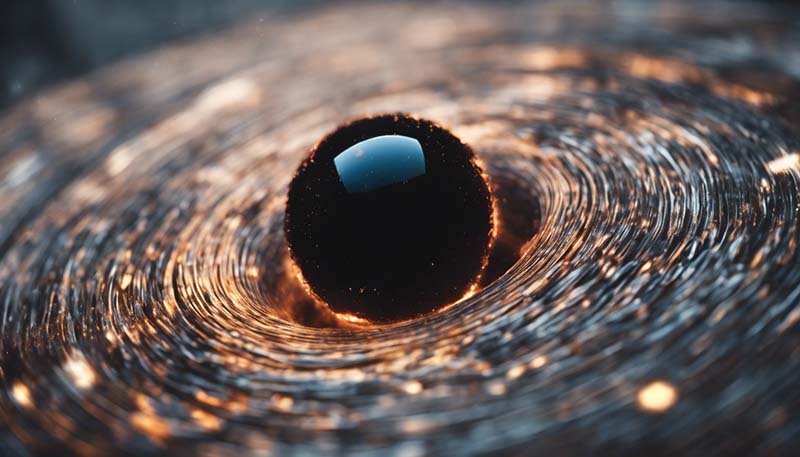Supermassive Black Holes: What We Know and What We Don't
Introduction
Supermassive black holes (SMBHs) are fascinating celestial objects that reside at the centers of most galaxies, including our own Milky Way. They are millions to billions of times more massive than our Sun and have a profound impact on the evolution of galaxies and the large-scale structure of the universe. Despite their importance, there is still much that we don't know about these enigmatic entities. In this article, we will explore the current understanding of supermassive black holes, the mysteries that surround them, and the ongoing research that aims to shed light on their nature.
What is a Supermassive Black Hole?
A supermassive black hole is a black hole with a mass that is several million to several billion times the mass of our Sun. The term "black hole" refers to a region in space where the gravitational pull is so strong that nothing, not even light, can escape from it. This extreme gravitational force is a result of the black hole's incredibly dense core, formed by the collapse of a massive star or the merging of several smaller black holes.
Advertisement
Evidence for Supermassive Black Holes
The existence of SMBHs is inferred from various observations, including the motion of stars and gas near the centers of galaxies, the detection of high-energy radiation, and the observation of relativistic jets. One of the most compelling pieces of evidence comes from the study of active galactic nuclei (AGN) and quasars, which are extremely bright and distant objects powered by the accretion of matter onto SMBHs.
Stellar Motion
The motion of stars near the centers of galaxies provides strong evidence for the presence of SMBHs. By carefully measuring the velocities and orbits of these stars, astronomers can infer the mass of the central object. In many cases, the mass is so large that it can only be explained by the presence of a supermassive black hole.
Active Galactic Nuclei and Quasars
AGNs and quasars are among the most luminous objects in the universe. They are powered by the accretion of matter onto SMBHs, which releases an enormous amount of energy in the form of radiation. The study of these objects has provided valuable insights into the properties and behavior of SMBHs.
What We Don't Know
Despite the significant progress in our understanding of SMBHs, there are still many open questions and mysteries surrounding these objects. Some of the key unknowns include:
Formation and Growth
The exact process by which SMBHs form and grow over time is still a topic of debate. There are several proposed mechanisms, including the collapse of massive stars, the merging of smaller black holes, and the direct collapse of gas clouds in the early universe. Each of these scenarios has its own set of challenges and uncertainties.

Connection to Galaxy Formation
The relationship between SMBHs and the formation of galaxies is another area of active research. It is believed that the growth of SMBHs and their host galaxies are closely linked, but the precise nature of this connection is not yet fully understood. Some theories suggest that the energy released by SMBHs during their growth may play a role in regulating star formation in galaxies.
Accretion and Emission Processes
The processes by which matter accretes onto SMBHs and the mechanisms by which they emit radiation are not completely understood. The extreme conditions near SMBHs, where gravitational forces and energy densities are incredibly high, pose significant challenges to our current theoretical models.
Ongoing Research and Future Prospects
Astronomers and physicists are using a variety of techniques and instruments to study SMBHs and address the many open questions surrounding them. Some of the key areas of ongoing research include:
Gravitational Wave Observations
The detection of gravitational waves, ripples in the fabric of spacetime caused by the acceleration of massive objects, has opened up a new window into the universe. Observations of merging black holes, including those in the SMBH mass range, can provide valuable insights into their properties and the underlying physics.
High-Resolution Imaging
Advanced telescopes and imaging techniques, such as those employed by the Event Horizon Telescope (EHT), are allowing astronomers to probe the regions around SMBHs with unprecedented resolution. These observations are revealing the structure and dynamics of the accretion disks and jets associated with SMBHs.
Theoretical Modeling and Simulations
The development of more sophisticated theoretical models and computer simulations is helping to improve our understanding of the complex physical processes occurring near SMBHs. These tools are crucial for interpreting observational data and guiding future research.
Conclusion
Supermassive black holes are among the most intriguing and enigmatic objects in the universe. While significant progress has been made in recent years, there is still much to learn about these mysterious entities. As new observational techniques and theoretical insights continue to emerge, our understanding of SMBHs and their role in the cosmos will undoubtedly deepen, revealing more of the secrets that these fascinating objects hold.
Comment